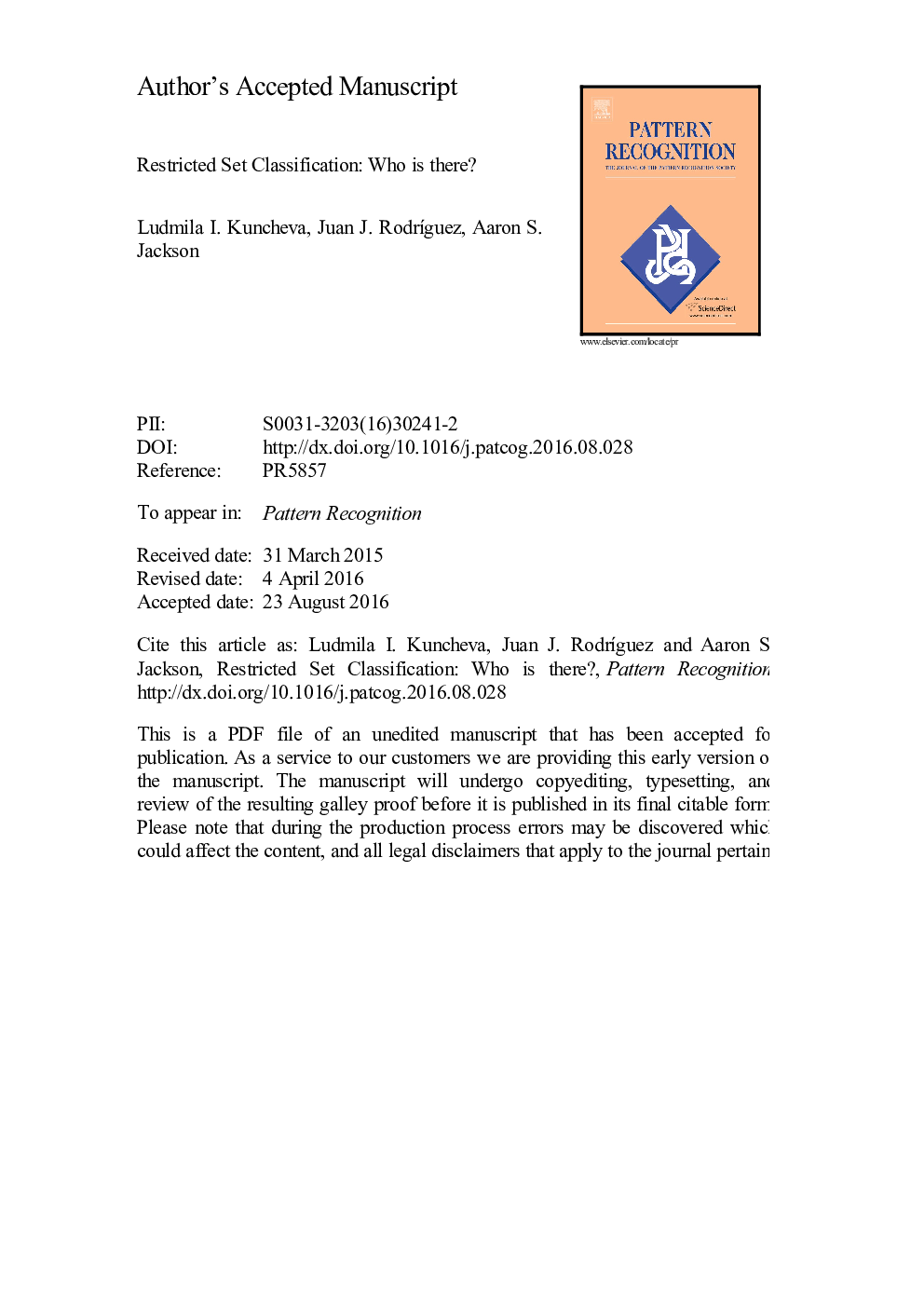| Article ID | Journal | Published Year | Pages | File Type |
|---|---|---|---|---|
| 4969811 | Pattern Recognition | 2017 | 28 Pages |
Abstract
We consider a problem where a set X of N objects (instances) coming from c classes have to be classified simultaneously. A restriction is imposed on X in that the maximum possible number of objects from each class is known, hence we dubbed the problem who-is-there? We compare three approaches to this problem: (1) independent classification whereby each object is labelled in the class with the largest posterior probability; (2) a greedy approach which enforces the restriction; and (3) a theoretical approach which, in addition, maximises the likelihood of the label assignment, implemented through the Hungarian assignment algorithm. Our experimental study consists of two parts. The first part includes a custom-made chess data set where the pieces on the chess board must be recognised together from an image of the board. In the second part, we simulate the restricted set classification scenario using 96 datasets from a recently collated repository (University of Santiago de Compostela, USC). Our results show that the proposed approach (3) outperforms approaches (1) and (2).
Related Topics
Physical Sciences and Engineering
Computer Science
Computer Vision and Pattern Recognition
Authors
Ludmila I. Kuncheva, Juan J. RodrÃguez, Aaron S. Jackson,
